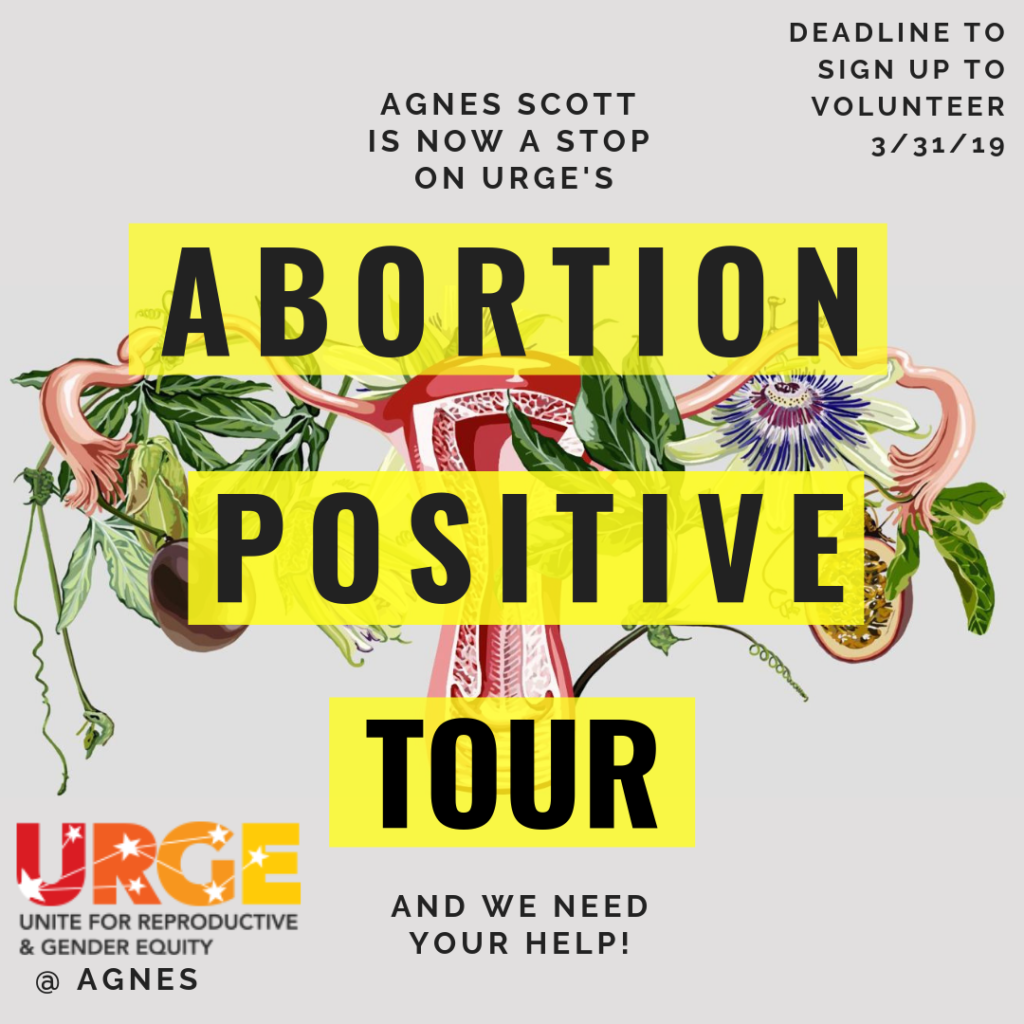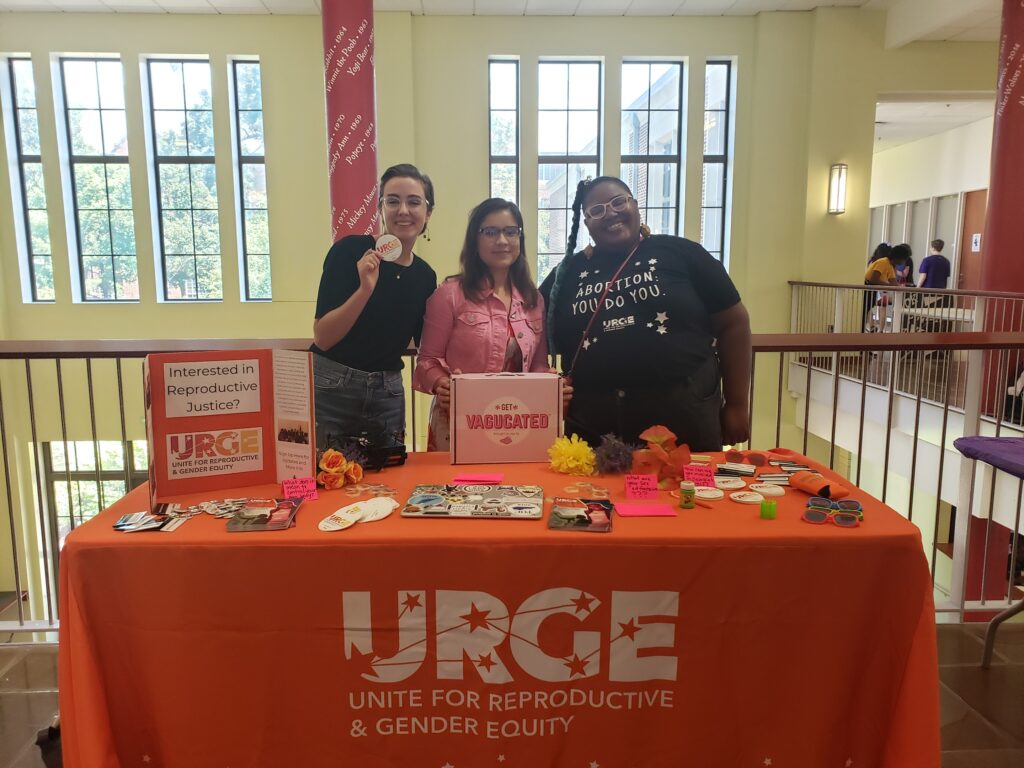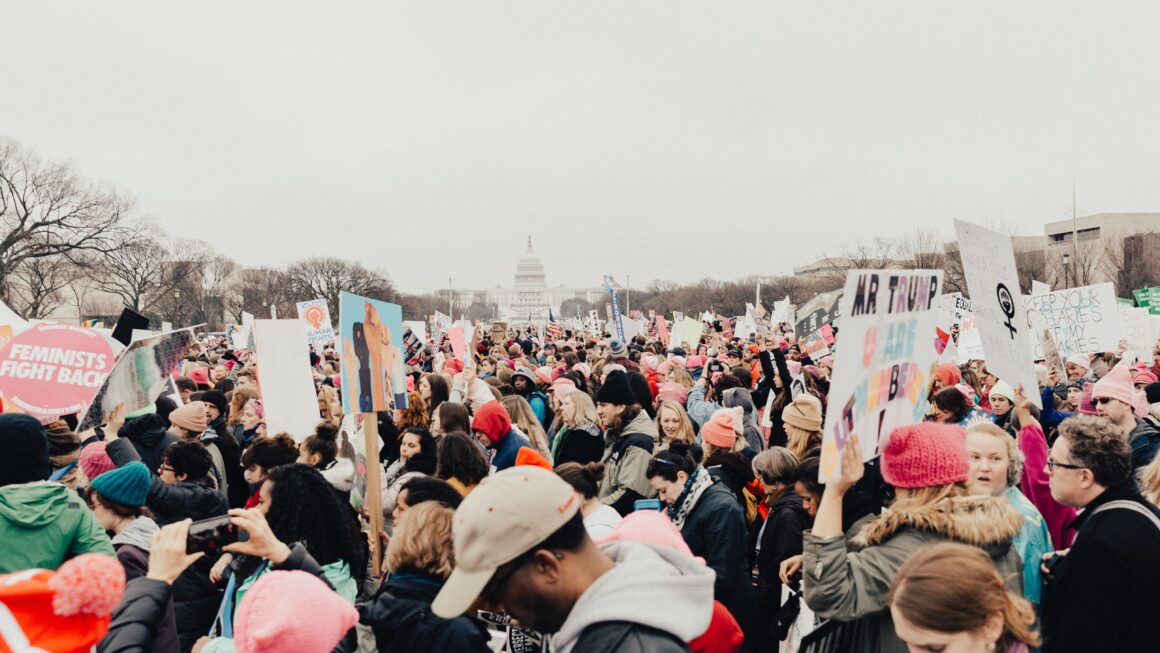There are a multitude of on campus organizations at Agnes Scott College. As an incoming student, you are confronted with a dizzying array of ongoing events on campus, clubs and organizations to join and activities to take part in. As a first year, one of the organizations that I wanted to join was URGE: United for Reproductive and Gender Equity. They tabled with bright orange signs and advocated for deeper understandings of health, justice, community, politics, and more. I felt like they were asking meaningul questions and dedicated to taking actions too.
When I signed up, I also applied for URGE’s first Reproductive Justice Leadership Institute (RJLI) at Agnes Scott. It is an annual weekend-long conference throughout regional areas to have conversations about reproductive justice with youth and URGE community organizers. It made me feel like I had found a fit – with organizers in the South with extensive knowledge of systems of power and their effects on underrepresented groups, there was an opportunity to learn from the most innovative, dedicated organizers in the U.S – they were creative, ambitious, and true to their north stars. Being around other students in the transformational experience, we found our strengths and leaned into them. Though I had never known much about community organizing, I could now look back on past experiences where I had actually been part of several such groups.
For example, when I lived in the Netherlands, my mother and I helped to organize clothing, furniture and goods drives for local refugee families resettling in cities in South Holland. Gathering church members, classmates, neighbors and community members together to address an issue or need is the root of community organizing- I just didn’t know it at the time. Looking back I could see how fundamental it is to myself, and I’ve always rooted myself in community and taken action.

The RJLI (pictured above) sparked my interest in increased community organizing, eventually leading to my position on the Executive Board of URGE. But it wasn’t a linear trajectory, and it came with many challenges. As a first year after RJLI, I was empowered by the histories I learned about reproductive justice, and I wanted to do something to make the new knowledge I had and tools of change to make a difference, but there is fierce competition for student activity on campus. I took part in a few actions, hosting tabling, planning meetings and organizing events with guest speakers, generally plotting out a trajectory of our growth in the leadership team.

Including events like the Abortion Positive Tour, we brought students into events which were informative and fun, celebrating our communities and identities together. During my second year, our executive board was thinking deeply about creating a more intentionally collective, shared leadership structure, because even though we held successful events, it was resting on five sets of wearied shoulders. Though we had a group of executive members around the table, each had more or less involvement in making events happen, and it was hard to manage our work schedules, the monumental goals we set, and the task of bringing on the next set of student leaders.
Eventually, I did step away from the organization. Though we had successes, I felt that the pulse of our work had not changed in the year I was a part of the leadership team. And, even though I made this decision, I regret it completely.
I have since learned that community organizing is an ebb and flow. You cannot be attached to immediate results, flawless adaptation and the same contributions from every member. Community organizing should not be 100% insitutionalized, and it works best when individuals pool their talents, step up with their skills as needed, and step back to support other’s empowerment. A year from that moment, I see how the burden I felt I carried was actually an opportunity: to innovate, to strive, to model the ideas I wanted to see implemented, to bring in new membership, to educate, to empower.

URGE shaped me into the teammate I am today, the critical thinker who seeks truth and justice, and distribution of resources for all who need it. It informed my views on ethics, community and leadership. Community organizing is an intensive process, and burnout is high, and how I felt is normal and expected. Community organizing is defined by cause, and dedicated to it. It’s not about who is the leader but how they lead, and how they activate the next ones. It was not perfect and I should not have expected that.
If I could go back to my second year, I would try to stay instead of drifting off. I do not think I gave back what I could in mentorship or gratitude, but I can do that in the next opportunity I have.

